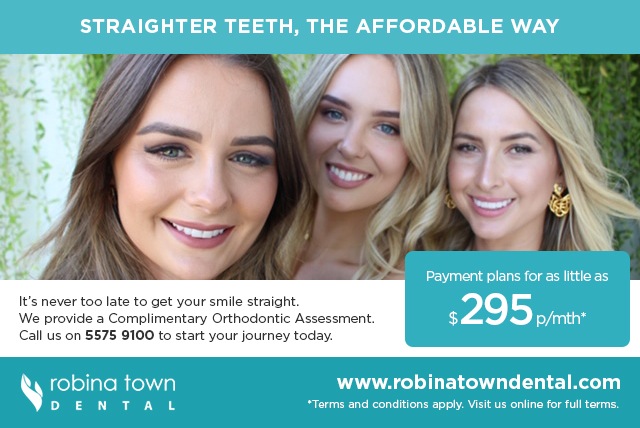While most people desire to have an attractive face, few understand that facial beauty is not only attributable to facial or symmetrical features but also has to do with good teeth and a well-defined bone structure. Even fewer people are aware of the inextricably entwined roles that the teeth and tongue play in shaping one’s craniofacial development.
There is a well-supported concept proposing that the forward growth of the face brings about the most attractive faces. A major element driving this forward growth is the tongue. The tongue is considered, in terms of weight proportion, the strongest muscle in the body. The tongue alone produces 500 grams of force against the front {anterior) teeth. To put this strength in perspective, it takes about 2 grams to move a front tooth.
This is an important point to comprehend when you consider the forces at work driving the forward or horizontal growth of the face. The muscle force of the tongue is able to push the teeth into either the correct or incorrect position. When its force is directed upwards and pushing towards the anterior part of the jaw, the tongue is able to expand and shape the upper jaw to create room for all your adult teeth. This is regarded as an optimum situation that not only prevents crowded teeth but further promotes forward growth for a more attractive face.

You may have heard of cases where teeth straightened by orthodontic treatment become crooked again not long after the braces have been removed. One of the primary reasons for this is because the tongue is not functioning in the correct position, that is, in the roof of the mouth.
In the illustrations below, do you think the upper arch should resemble figure 1 or figure 2?
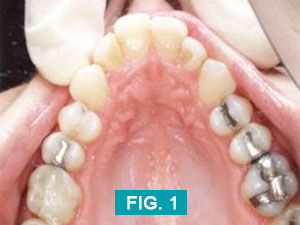

You can derive the answer by looking at the shape of your own tongue. Is it shaped like the inverted ‘V’ in figure 1 or more rounded like a horse shoe in figure 2?
Obviously, it should look more like the latter, given that our upper teeth normally drape around the tongue. Both arches pictured above belong to the same patient, with figure 2 showing the proper shape of the upper arch after being treated with a TPA expander. The oral device expanded the arch so that it can comfortably accommodate the teeth.
As mentioned, the position of the tongue helps to create the shape and form of the upper teeth. In the case of a nose breather, the tongue sits on the roof of the mouth. To determine the optimal resting position of your tongue, simply say the word ‘heaven’ and hold your tongue just as you enunciate the ‘n’ letter – your tongue should be resting on the roof of your mouth. That is also the ‘neutral’ position of the tongue and the perfect position to keep your tongue when you are at rest or swallowing.
Tongue at resting position
The following are teeth images of patients of different age groups at Robina Town Dental. The issues presented here are indicative of the problems faced by each patient demographic.
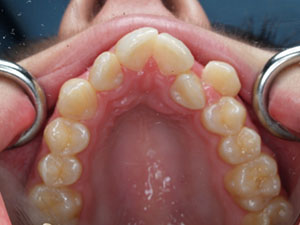
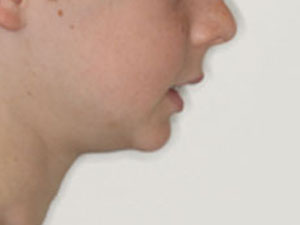
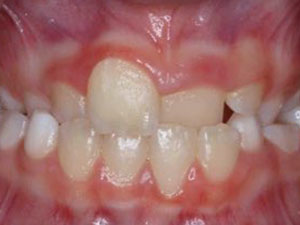
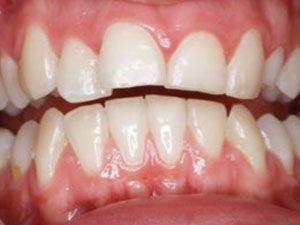
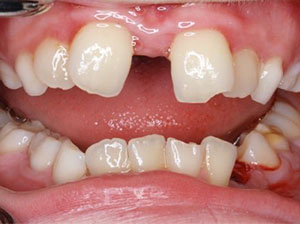
Although they belong to different age groups, these patients share many common dental problems:
- Crowded teeth
- Deep overbite/ underbite
- Teeth grinding (Bruxism)
- Mouth breathing
- Narrow arches
- Upper/lower jaws too far back
The commonality of problems cutting across different age groups highlights a significant issue: These dental problems can develop very early and if left untreated will persist throughout adulthood. Since 90 per cent of craniofacial development is completed by age 12, early treatment of any craniofacial abnormalities or issues makes perfect sense. Importantly, it will help patients with severe cases to avoid corrective orthognathic surgery, which is required for patients past the growth stage.1
Mouth breathers, in particular, are more likely to drop their tongues when they breathe through their mouth. At this position, the tongue fails to render adequate support in the inside of the upper arch, thus resulting in a narrowed upper arch (as shown in fig. 1).
The ideal bite
One common illustration is to view the upper and lower arches of teeth as fitting together, respectively, like the lid and base of a box. As illustrated in figure 3, the width of the upper arch should be slightly wider than the lower arch’s. This is a healthy bite.
As illustrated in figure 4: If the upper arch is narrow, it can also prevent the lower arch from moving forward.
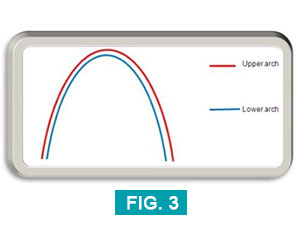
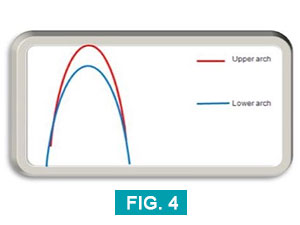
In figure 5, you can see the effects of a retruded lower jaw – it has been forced backwards by a narrowed upper arch. The TMJ joints of the patient are also compressed in this position, which may result in headaches and other joint problems.
The effects of the narrow upper arch and retruded lower jaw may also be observed in terms of facial aesthetics. The blue outline in figure 5 shows the ‘Bolton Norm’, which indicates the ideal position of the lower jaw and the chin.
Figure 6 shows the dramatic improvement in facial profile following an early treatment.
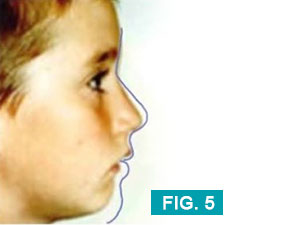
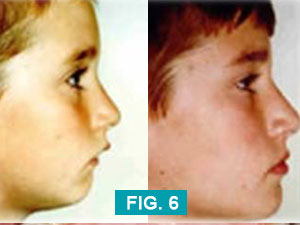
The above ‘before’ and ‘after’ treatment shots illustrate a salient point: Function and aesthetics often work in perfect harmony. The better the state of your health, the more good looking you tend to be, and vice versa.
In conclusion
The same can be true of any young patient that receives early treatment for any bite issues prior to completing their craniofacial development.
If you have any of the dental problems as discussed above, you may wish to seek early treatment to limit the extent and severity of the damage. Call us to arrange an appointment with one of our friendly dentists at our Gold Coast clinic today.
Remember: It is much easier and more economical to treat a growing child – from as young as 5-6 years old – as there is still time to direct, within genetic limitations, the future growth and development of his or her craniofacial features.
In closing, here are some important tips you can share with your children that can have a positive outcome for their craniofacial development:
- Try to breathe through your nose as often as you can
- Position your tongue against the roof of the mouth when at rest
- Close your lips when at rest
- Reduce muscle movement when swallowing
Finally, in the words of George Catlin (uttered some 150 years ago): “Shut your mouth and save your life”.
References
1. Shepard, J. et al. Evaluation of the Upper Airway in Patients with OSA. Sleep 1991, 14(4):361-71. (Research done at Mayo)
